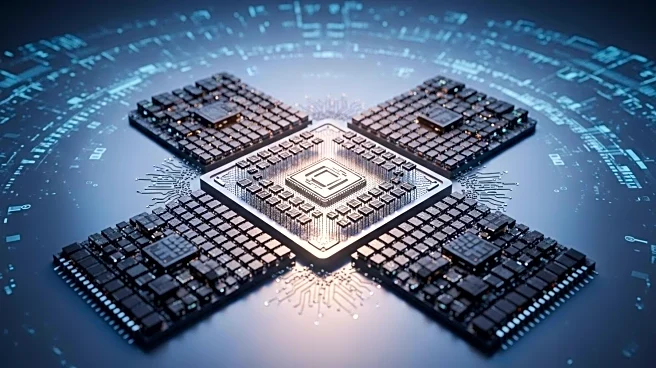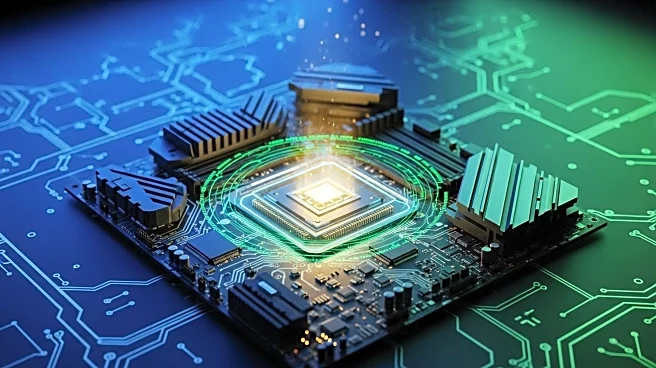What's Happening?
AMD has filed a patent for a new type of DDR5 memory module, termed 'High-Bandwidth DIMM' (HB-DIMM), which aims to double the data rate from approximately 6.4 Gbps to 12.8 Gbps per pin. This innovation is achieved by incorporating buffer chips and 'pseudo' memory channels on the module, effectively allowing it to function as two channels within a single stick. The patent suggests that this increase in bandwidth can be accomplished without altering the existing DDR5 chips, utilizing a register/clock driver (RCD) to route commands to two independent pseudo-channels. This development is particularly significant for high-performance graphics processors and servers, which are increasingly demanding more memory bandwidth.
Why It's Important?
The introduction of AMD's HB-DIMM could have substantial implications for industries reliant on high-performance computing, such as AI and graphics processing. As current DDR5 speeds may not suffice for future CPU and GPU demands, this innovation could alleviate potential bottlenecks in memory bandwidth. The ability to double RAM speed without changing the underlying DDR5 chips could provide a cost-effective solution for enhancing computing power. However, the adoption of this technology would require support from motherboard, chipset, and CPU manufacturers, as well as industry-wide acceptance, potentially through JEDEC standardization.
What's Next?
For AMD's HB-DIMM to transition from patent to product, significant industry collaboration is necessary. This includes gaining support from major players like Intel, Samsung, and Micron, who would need to integrate this technology into their systems. The path to market could be lengthy, as proprietary memory standards have historically struggled to gain traction without broad industry backing. If successful, this technology could set a new standard for memory performance in high-demand computing environments.
Beyond the Headlines
The development of HB-DIMM highlights the ongoing 'memory wall' challenge faced by the tech industry, where the demand for memory bandwidth outpaces the improvements in DRAM technology. AMD's approach reflects a broader trend of seeking innovative solutions to enhance memory performance without relying solely on advancements in chip manufacturing. This patent also underscores AMD's commitment to maintaining its competitive edge in the memory space, building on its history of innovations like High Bandwidth Memory (HBM).










